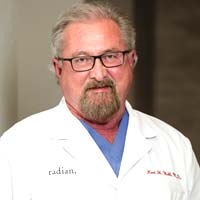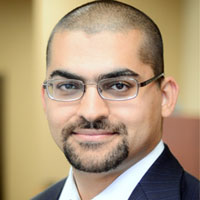ARTAS Robotic System is a Highly Optimized Hair Restoration Technique
The American Academy of Dermatology has revealed startling statistics about people affected by hair loss. In the United States alone over 50 million men and 30 million women suffer from hair loss caused by medications and treatments like chemotherapy. Hair fall occurs due to illness, improper diet, hectic lifestyle, certain habits, use of excess hair styling products and stress also.
However male pattern baldness is hereditary in nature. Male Pattern Baldness or androgenic alopecia occurs when men are affected by the presence of the hormone dihydrotestosterone (DHT). DHT acts on the hairline, crown and top of the head, making the hair shrink leading to hair miniaturization. Although the hair follicles do not grow new hair, they are viable.
ARTAS Robotics System
Whatever the reason, hair loss cannot be tolerated by many people. Thanks to technological advancement and sophistication various innovative treatment options like the robotic hair restoration method or the ARTAS Robotic System have been launched.
The ARTAS procedure uses a robotic arm entirely controlled by qualified and experienced surgeons to extract healthy hair from the sides and back of head (which are genetically immune to baldness) which are then transplanted to the bald areas of the scalp.
The ARTAS system uses FUE or follicular unit extraction a minimally invasive technique or method of extraction of hair follicles. The ARTAS system was developed by Restoration Robotics and it features an image-guided robotic arm, small dissection punches and an interactive computer interface.
The system has been launched after several years of research and has been tested widely. It is also cleared by the FDA and other international regulatory bodies.
The advantage here is that digital imaging technology is leveraged to precisely locate hair that can be harvested without affecting the donor area to retain a natural look. The ARTAS System’s precision robotics technology removes the hair in a pre-defined fashion. The hair is transplanted methodically giving a totally natural look.
Optimum results can be seen within 3-4 months, as soon after the treatment permanent hair starts growing again in the previously bald areas. As the hair grows gradually and is not dramatic and instant, other people will not be able to find out if a person has undergone the procedure. The new hair will last a lifetime.
The advanced stereo digital imagery employed here helps map and analyze the hair and gives insights into each follicular unit in its natural groupings in 3-D visuals. This helps in the precise extraction of follicular units that can be transplanted. The system also adjusts for patient head movement dynamically with the visual servoing feature.
ARTAS Robotic Procedure
Hair on the scalp grows in groupings called follicular units containing one to four hair follicles. Hair restoration procedures use single-hair follicular units to be transplanted in irregular patterns along the hairline. This makes it look like the original hairline.
Also
surgeons place multiple-hair follicular units in the inner areas of the
scalp to ensure that hair grows densely there giving fullness to hair.
The entire hair restoration treatment is done as an out-patient
procedure. Before transplant the scalp area is trimmed to be digitized
by the ARTAS Robotic System. The surgeon applies a local anesthetic on
scalp besides also a skin tensioner to enable accurate location of hair
in its natural groupings and to facilitate the harvest process.
Based
on the ARTAS Robotic System’s digital maps and after proper analysis of
the natural grouping of hair the robotic arm is guided by the surgeon
to harvest hair from donor areas randomly to let the area retain its
natural look. The process is repeated multiple times till there is
enough hair to cover the bald scalp area.
The individual follicular
units so removed are stored carefully until they can be implanted into
the recipient area.
The harvested viable grafts are carefully transplanted on the bald areas of scalp according to the surgeon’s design plan to optimally cover the area with new hair. The implanted grafts will start growing as permanent hair.
Advantages of ARTAS
The simple procedure allows patients to return to work or other activities within a day also. Within a week the donor and recipient areas of scalp will sport a similar look which improves over 6-9 months to give a full head of permanent hair.
As the procedure is less invasive than
traditional methods it leaves no scar and patients can go back to normal
activities sooner. Also the robotic arm helps the surgeon overcome
tiredness which is bound to occur during the procedure which takes
between four to eight hours. Also the transection rates using ARTAS is
8% less compared to 20-30% with manual FUE. The ARTAS procedure
reportedly takes half the surgery time when compared to manual FUE
methods.
Although the procedure is considered expensive the results
obtained and other advantages like minimal scarring and ease of
endurance during the procedure make it most suitable for men who have
gone bald at a young age and who need to get back to work in a day or
two.
By- Hairfear - 07-05-2013







